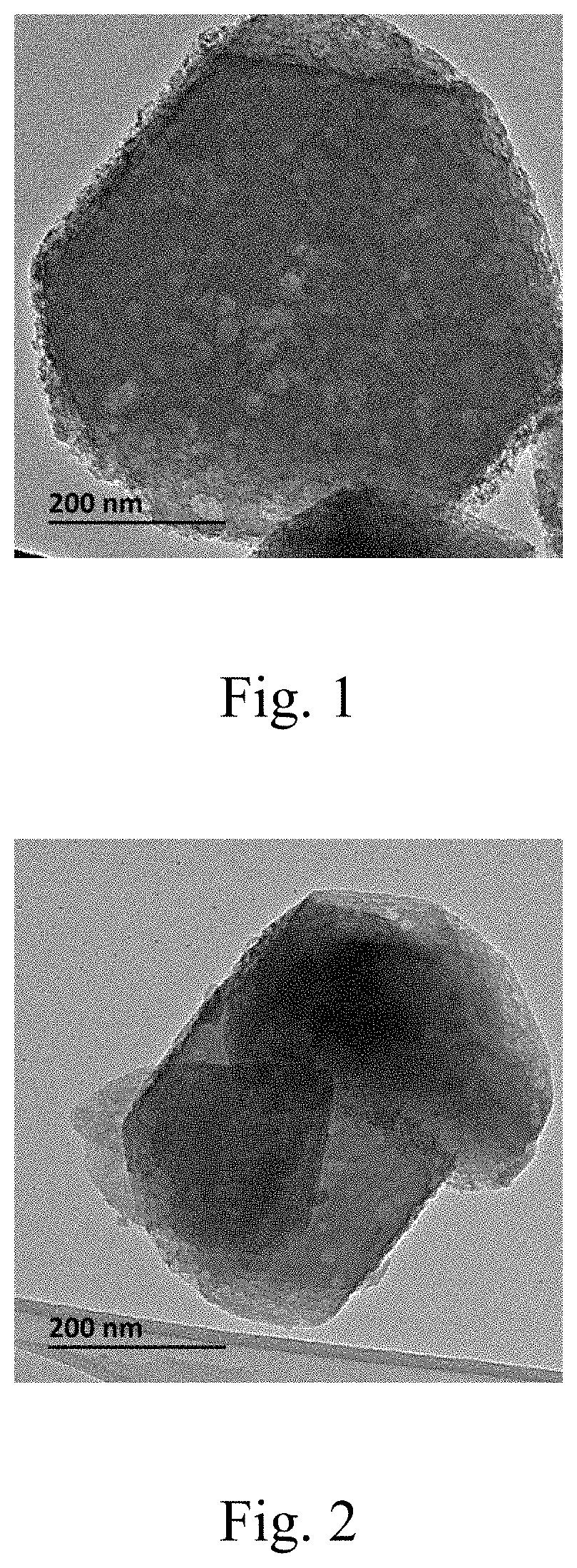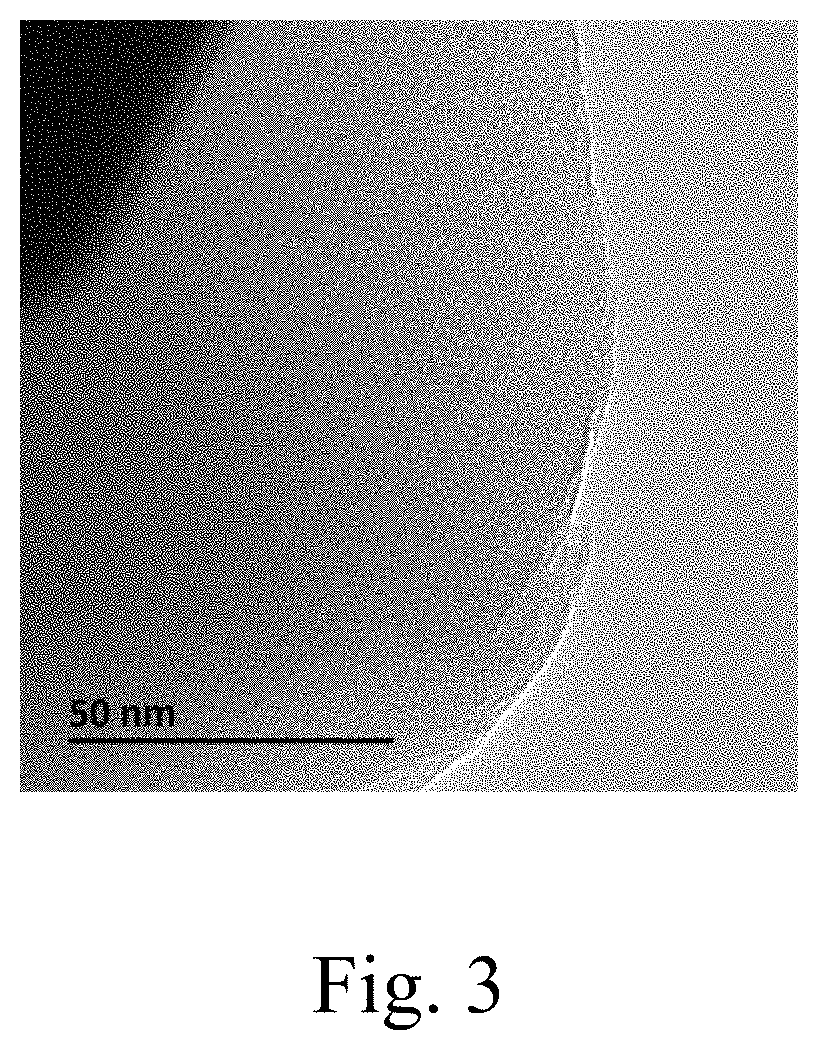NaY molecular sieve with an aluminum-rich surface and a process of preparing same
a molecular sieve and aluminum-rich technology, which is applied in the direction of catalyst activation/preparation, physical/chemical process catalysts, crystalline aluminosilicate zeolites, etc., can solve the problem that the dealuminization degree of the surface and the bulk phase of the catalyst are difficult to be dealuminized to the same degree, and affect the acidity of the dealuminized, etc. problem, to achieve the effect of facilitating crystal nuclei
- Summary
- Abstract
- Description
- Claims
- Application Information
AI Technical Summary
Benefits of technology
Problems solved by technology
Method used
Image
Examples
example 1
[0087]642.44 g of high-alkaline sodium metaaluminate solution was added into 866.51 g of water glass, the mixture was stirred for dynamic aging for 48 hours at room temperature of 20° C., then the mixture was kept stand and aged for 5 hours at 60° C., and finally 195 g of deionized water was added under the stirring, so as to provide a directing agent having a molar composition of 15Na2O: Al2O3: 15SiO2: 320H2O.
[0088]348.4 g of the directing agent above and 12.63 g of a first silicon source of colloidal silica were mixed under high-speed stirring (rotating at 900 r / min) at room temperature, and stirring was continued for 30 min to obtain a first mixture. Then the first mixture, 508.14 g of a second silicon source of water glass, 43.10 g of an aluminum source of low-alkaline sodium metaaluminate solution, 286.5 g of an aluminum source of aluminum sulfate and 166.5 g of water were added into a mixing tank in co-current flow also under high-speed stirring at room temperature to obtain a...
example 2
[0089]642.44 g of high-alkaline sodium metaaluminate solution was mixed with 866.51 g of water glass, the mixture was stirred for dynamic aging for 48 hours at room temperature of 20° C., then the mixture was kept stand and aged for 5 hours at 60° C., and finally 195 g of deionized water was added under the stirring, so as to provide a directing agent having a molar composition was 15Na2O: Al2O3: 15SiO2: 320H2O.
[0090]311.6 g of the directing agent above and 12.63 g of a first silicon source of colloidal silica were mixed under high-speed stirring (rotating at 900 r / min) at room temperature, and stirring was continued for 60 min to obtain a first mixture. Then the first mixture, 441.37 g of a second silicon source of water glass, 40.00 g of an aluminum source of low-alkaline sodium metaaluminate solution, 251.00 g of an aluminum source of aluminum sulfate and 200.63 g of water were added into a mixing tank in co-current flow also under high-speed stirring at room temperature to obtai...
example 3
[0091]164.54 g of high-alkaline sodium metaaluminate solution was mixed with 291.37 g of water glass, the mixture was stirred for dynamic aging for 20 hours at 30° C., then the mixture was kept stand and aged for 15 hours at 40° C., and finally 60 g of deionized water was added under the stirring, so as to provide a directing agent having a molar composition of 20Na2O: Al2O3: 20SiO2: 380H2O.
[0092]515.91 g of the directing agent above and 592.62 g of a first silicon source of water glass were mixed in co-current flow under high-speed stirring (rotating at 900 r / min) at room temperature, to obtain a first mixture. Then 500 g of a second silicon source of water glass, 166.31 g of an aluminum source of low-alkaline sodium metaaluminate solution, 332.87 g of an aluminum source of aluminum sulphate and 479.4 g of water were added in co-current flow at a point spaced far from the first mixture under rapid stirring (rotating at 900 r / min) to give a mixture having a molar composition of 4Na2...
PUM
| Property | Measurement | Unit |
|---|---|---|
| molar ratio | aaaaa | aaaaa |
| molar ratio | aaaaa | aaaaa |
| molar ratio | aaaaa | aaaaa |
Abstract
Description
Claims
Application Information
 Login to View More
Login to View More - R&D
- Intellectual Property
- Life Sciences
- Materials
- Tech Scout
- Unparalleled Data Quality
- Higher Quality Content
- 60% Fewer Hallucinations
Browse by: Latest US Patents, China's latest patents, Technical Efficacy Thesaurus, Application Domain, Technology Topic, Popular Technical Reports.
© 2025 PatSnap. All rights reserved.Legal|Privacy policy|Modern Slavery Act Transparency Statement|Sitemap|About US| Contact US: help@patsnap.com


